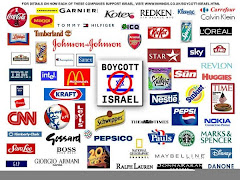Viral marketing
Contoh bisa klik
disini
Viral marketing and viral advertising refer to marketing techniques that use pre-existing social networks to produce increases in brand awareness or to achieve other marketing objectives (such as product sales) through self-replicating viral processes, analogous to the spread of pathological and computer viruses. It can be word-of-mouth delivered or enhanced by the network effects of the Internet.[1] Viral promotions may take the form of video clips, interactive Flash games, advergames, ebooks, brandable software, images, or even text messages. The basic form of viral marketing is not infinitely sustainable.
The goal of marketers interested in creating successful viral marketing programs is to identify individuals with high Social Networking Potential (SNP) and create Viral Messages that appeal to this segment of the population and have a high probability of being passed along.
The term "viral marketing" is also sometimes used pejoratively to refer to stealth marketing campaigns[2]—the use of varied kinds of astroturfing both online and offline to create the impression of spontaneous word of mouth enthusiasm.
History
The term Viral Marketing was coined by a Harvard Business School professor, Jeffrey Rayport, in December 1996 article for Fast Company The Virus of Marketing. [3] The term was further popularized by Tim Draper and Steve Jurvetson of the venture capital firm Draper Fisher Jurvetson in 1997 to describe Hotmail's e-mail practice of appending advertising for itself in outgoing mail from their users.[4]
Among the first to write about viral marketing on the Internet was media critic Douglas Rushkoff in his 1994 book Media Virus. The assumption is that if such an advertisement reaches a "susceptible" user, that user will become "infected" (i.e., sign up for an account) and can then go on to infect other susceptible users. As long as each infected user sends mail to more than one susceptible user on average (i.e., the basic reproductive rate is greater than one), standard in epidemiology imply that the number of infected users will grow according to a logistic curve, whose initial segment appears exponential.
Among the first to write about algorithms designed to identify people with high Social Networking Potential is Bob Gerstley in Advertising Research is Changing. Gerstley uses SNP algorithms in quantitative marketing research to help marketers maximize the effectiveness of viral marketing campaigns. In 2004 the concept of Alpha User was released to indicate that it had become now possible to technically isolate the focal point members of any viral campaign, the "hubs" who are most influential. Alpha Users can today be isolated and identified, and even targeted for viral advertising purposes most accurately in mobile phone networks, as mobile phones are so personal.
In response to its use, many sites have started up trying to describe what viral marketing is.
Notable examples
- The Ponzi scheme and related investment Pyramid schemes, are an early and unfortunate example of viral marketing. In each round, investors are paid interest from the principal deposits of later investors. Early investors are so enthusiastic that they recruit their friends resulting in exponential growth until the pool of available investors is tapped out and the scheme collapses.
- Multi-level marketing popularized in the 1960s and 70's (not to be confused with Ponzi schemes) is essentially a form of viral marketing in which representatives gain income through marketing products through their circle of influence and give their friends a chance to market products similarly. When successful, the strategy creates an exponentially growing network of representatives and greatly enriches adopters. Examples include Amway and Mary Kay Cosmetics.
- BusinessWeek (2001) described web-based campaigns for Hotmail (1996) and The Blair Witch Project (1999) as striking examples of viral marketing, but warned of some dangers for imitation marketers. [5]
- Burger King's The Subservient Chicken campaign was cited in Wired as a striking example of viral or word-of-mouth marketing. [6]
- In 2000, Slate described TiVo's unpublicized gambit of giving free TiVo's to web-savvy enthusiasts to create "viral" word of mouth, pointing out that a viral campaign differs from a publicity stunt.[7]
- Launched in 2002, BMW Films was among the earliest viral marketing campaigns. It attracted nearly 55 million viewers and helped to elevate the career of Clive Owen.
- Cadbury's Dairy Milk 2007 Gorilla advertising campaign was heavily popularised on YouTube and Facebook.
- The Big Word Project, launched in 2008, aims to redefine the Oxford English Dictionary by allowing people to submit their website as the definition of their chosen word. The viral marketing project, created to fund two Masters students' educations, attracted the attention of bloggers worldwide, being featured on Daring Fireball and Wired Magazine. [8]
- The 2008 film Cloverfield was first publicized with a teaser trailer that did not advertise the film's title, only its release date: "01·18·08." Elements of the viral marketing campaign included MySpace pages created for fictional characters and websites created for fictional companies alluded to in the film.
- The release of the 2007 concept album Year Zero by Nine Inch Nails involved a viral marketing campaign, including the band leaving USB drives at concerts during NIN's 2007 European Tour. This was followed up with a series of interlinked websites revealing clues and information about the dystopian future in which the album is set.
- In 2007, World Wrestling Entertainment promoted the return of Chris Jericho with a viral marketing campaign using 15-second cryptic binary code videos. The videos contained hidden messages and biblical links related to Jericho, although speculation existed throughout WWE fans over who the campaign targeted.[9][10] The text "Save Us" and "2nd Coming" were most prominent in the videos. The campaign spread throughout the internet with numerous websites, though no longer operational, featuring hidden messages and biblical links to further hint at Jericho's return.[11][12]
- In 2007 The New York Times' advertising columnist Stuart Elliott wrote about a business-to-business viral campaign for a software company, showing that viral advertising has application in areas outside of consumer marketing.[13]
- In 2007, Portuguese football club Sporting Portugal integrated a viral feature in their campaign for season seats. In their website, a video [14] required the user to input his name and phone number before playback started, which then featured the coach Paulo Bento and the players waiting at the locker room while he makes a phone call to the user telling him that they just can't start the season until the user buys his season ticket. Flawless video and phone call synchronization and the fact that it was a totally new experience for the user led to nearly 200,000 pageviews phone calls in less than 24 hours.[citation needed]
- Avirginsplea.com claimed that a 25-year old virgin living in Toronto named Geoff needed five million hits on his website in 30 days in order for Jenn, one of his very hot platonic female friends, to help him lose his virginity.
- Early in its existence (perhaps between 1988 and 1992), the television show Mystery Science Theater 3000 had limited distribution. The producers encouraged viewers to makes copies of the show on video tape and give them to friends in order to expand viewership and increase demand for the fledgling Comedy Central network. During this period the closing credits included the words "Keep circulating the tapes!"[citation needed]
- The marketing campaign for the 2008 film The Dark Knight combined both online and real-life elements to make it resemble an alternate reality game. Techniques included mass gatherings of Joker fans, scavenger hunts around world, detailed and intricate websites that let fans actually participate in "voting" for political offices in Gotham City, and even a Gotham News Network that has links to other Gotham pages such as Gotham Rail, a Gotham travel agency, and political candidate's pages. The movie also markets heavily off of word of mouth from the thousands of Batman fans.
- Both the second and third games in the Halo series were preceded with viral marketing in the form of an alternate reality game.
- "will it blend - the founder of blendtec, Tom Dickson, blends various items in a blendtec blender
Viral expansion loop
A viral expansion loop is similar to viral marketing with one notable difference: viral marketing can't be replicated indefinitely, while a viral expansion loop must be in order for it to exist.[15] When properly conceived and implemented, a viral loop almost guarantees self-replicating growth. Companies that have attempted to utilize viral loops to their advantage include social networking engine Ning, and viral loops power many Web 2.0 icons, including Twitter, Orkut, PayPal, YouTube, Facebook, MySpace, Digg and Flickr.
References
Bibliography
- Seth Godin: Unleashing the ideavirus, 2001
- Emanuel Rosen: The Anatomy of Buzz, 2002
- Susannah Gardner: Buzz Marketing with Blogs For Dummies, 2005
- Mark Hughes: Buzzmarketing: Get People to Talk About Your Stuff, 2005
- Ron McDaniel: Buzzoodle Buzz Marketing, 2006
- Stefano Calicchio: Pass the Virus! How to exploit the viral marketing to give an uproarious success to your own ideas, 2006
- Jack Barrow: Satanic Viruses - The fall of the Roman Empire and how to bring it about, 2008, 3rd ed. (first published 1989)
See also








